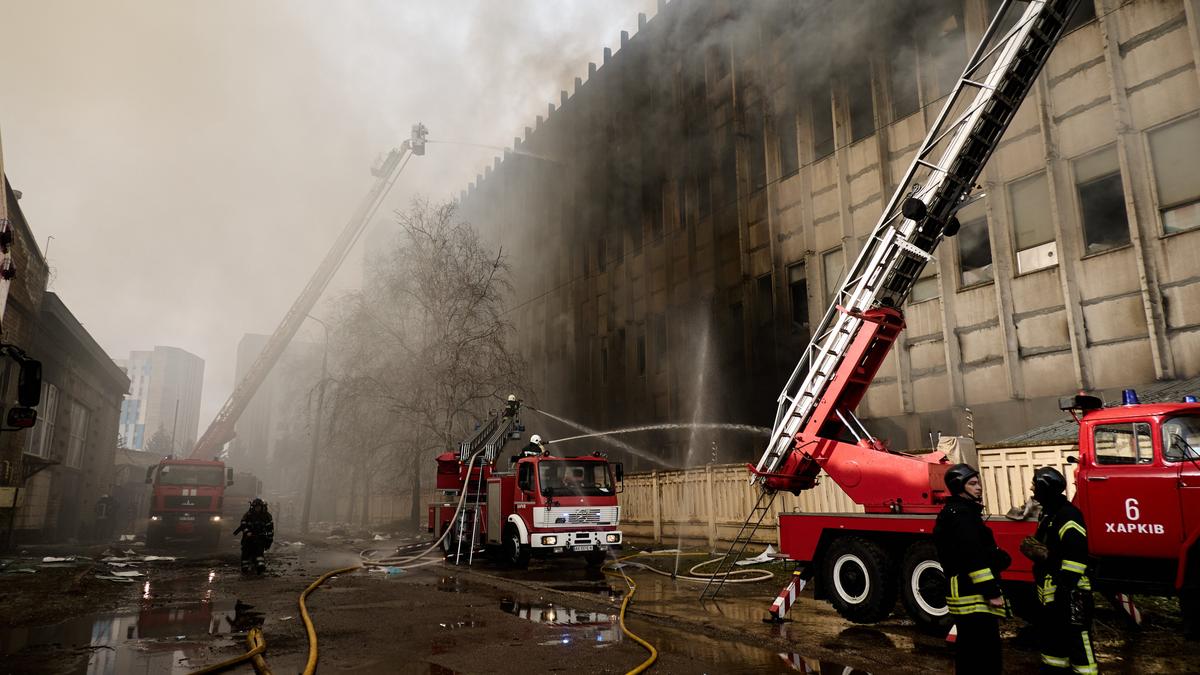Unlike last winter, there was not a single 24-hour period in December, January or February when Kyiv experienced a power outage. But the Russian military resumed its carpet bombing of civilian infrastructure in spring when the Ukrainian air missile defence system was depleted due to delays in Western military aid.
Russia’s targeted airstrikes have already seriously compromised Ukraine’s ability to provide electricity to its own citizens. Even after the European Union’s vote in March to increase energy exports, the prospect of a serious power shortage taking hold by the summer looms over the entire country unless a way to significantly increase imports can be found.
This year has already seen significant targeted Russian strikes on energy infrastructure, with those living in the cities of Kharkiv, Kryvyi Rih, Mykolayiv and Odesa, as well as those in the wider Dnipropetrovsk region, suffering more than most. A particularly intense wave of overnight airstrikes on 22 March left more than a million people without power nationwide.
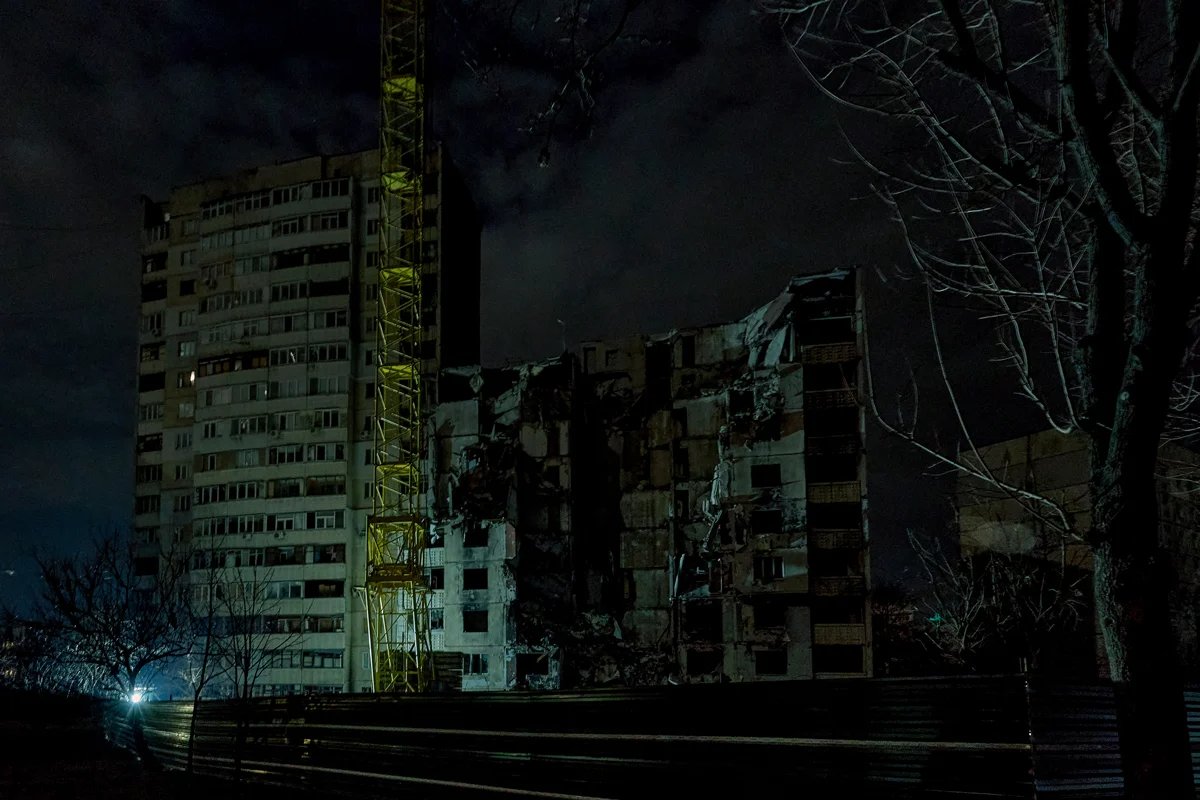
Houses destroyed by Russian rockets during a power outage in Kharkiv, Ukraine, 24 March 2024. Photo: Sergei Kozlov / EPA-EFE
One of the most significant blows was the attack on the Dnipro Hydroelectric Power Plant, in the southern Zaporizhzhia region, Ukraine’s largest dam. Two of the eight missiles fired at the facility hit their targets, destroying half of the plant’s turbine hall and causing the outbreak of a serious fire.
The situation is also dire in Ukraine’s second city Kharkiv, according to Volodymyr Kudritskiy, who heads Ukraine’s national grid operator Ukrenergo. “The enemy attempted to destroy practically every main facility supplying the city with electricity,” he told Ukrainska Pravda.
A major point of concern is the possibility of attacks on nuclear power plants. By engaging in “nuclear blackmail” over the occupied Zaporizhzhia Nuclear Power Plant, Russia is trying to convince Ukraine and the international community to agree to the current status quo and to end the war on their terms.
While Zaporizhzhia is the biggest, there are three other nuclear power plants in Ukraine operating in the Khmelnitsky, Rivne and Mykolaiyv regions that provide more than half of Ukraine’s electricity and are vital to maintaining the country’s power supply.
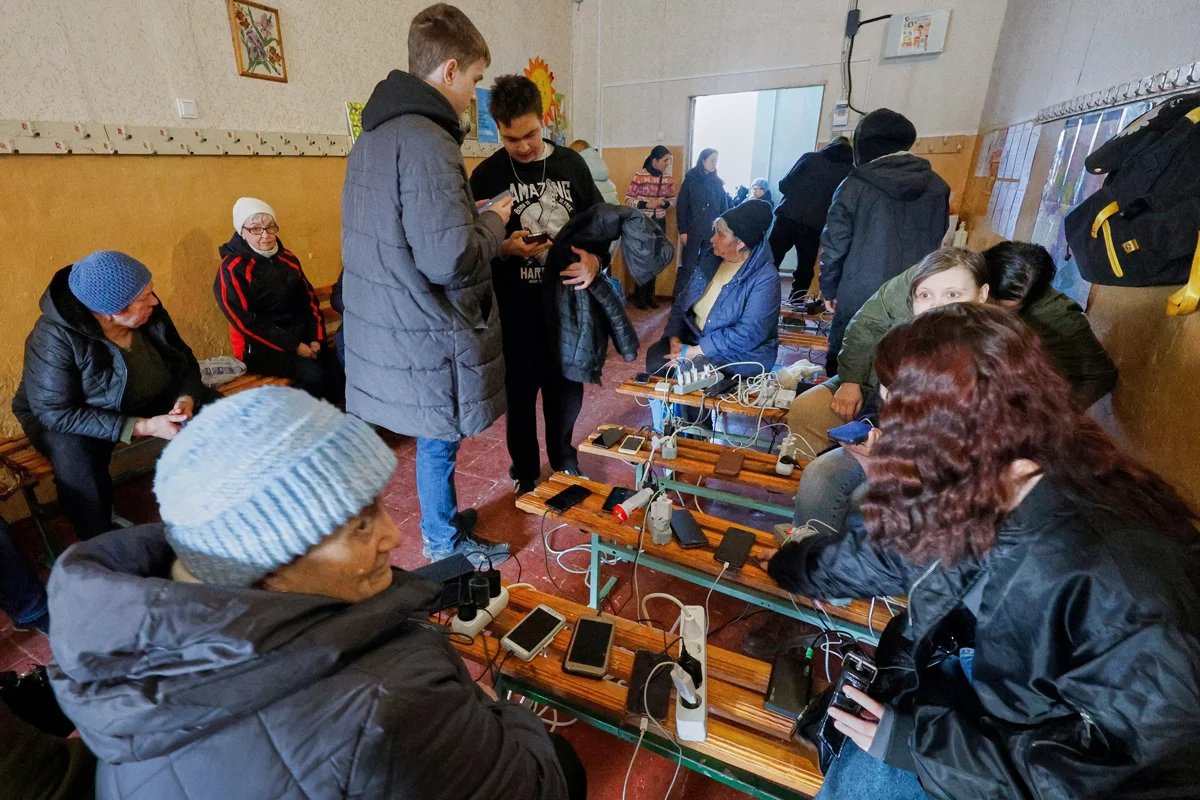
People gather to charge their phones near a generator after airstrikes on energy facilities in Kharkiv, Ukraine, 22 March 2024. Photo: Sergei Kozlov / EPA-EFE
In the short term, Ukraine can hold on by relying on nuclear energy and energy imports, according to Volodymyr Omelchenko, of the Razumkov Centre, a Ukrainian non-governmental public policy think tank. Besides, planned outages are likely to become standard practice across the country to ration energy supplies, Omelchenko added.
“But as the war continues, sooner or later the system will collapse,” Omelchenko warned. “The war is a battle of energy infrastructure. We are targeting their oil refineries. Whoever’s system withstands the fight will win the war,” he says matter-of-factly.
Recent rumours hint at a possible Russian offensive on Kharkiv, with the aim of creating a buffer zone between the Ukrainian army and Russia’s Belgorod region, which more than any city in Russia has experienced the real-life effects of the war, and has been subjected to a growing number of missile and drone strikes in recent months.
To lay the groundwork for a potential offensive, the Russian army appears to be targeting civilian infrastructure in territories close to the border, hence the recent uptick in strikes on Kharkiv and the neighbouring Sumy region.
Non-stop airstrikes, a lack of essential services and a communication blackout serve as a reminder of the events in Avdiivka, a city bombarded by Russian shelling for months before the Ukrainian army’s retreat in February.
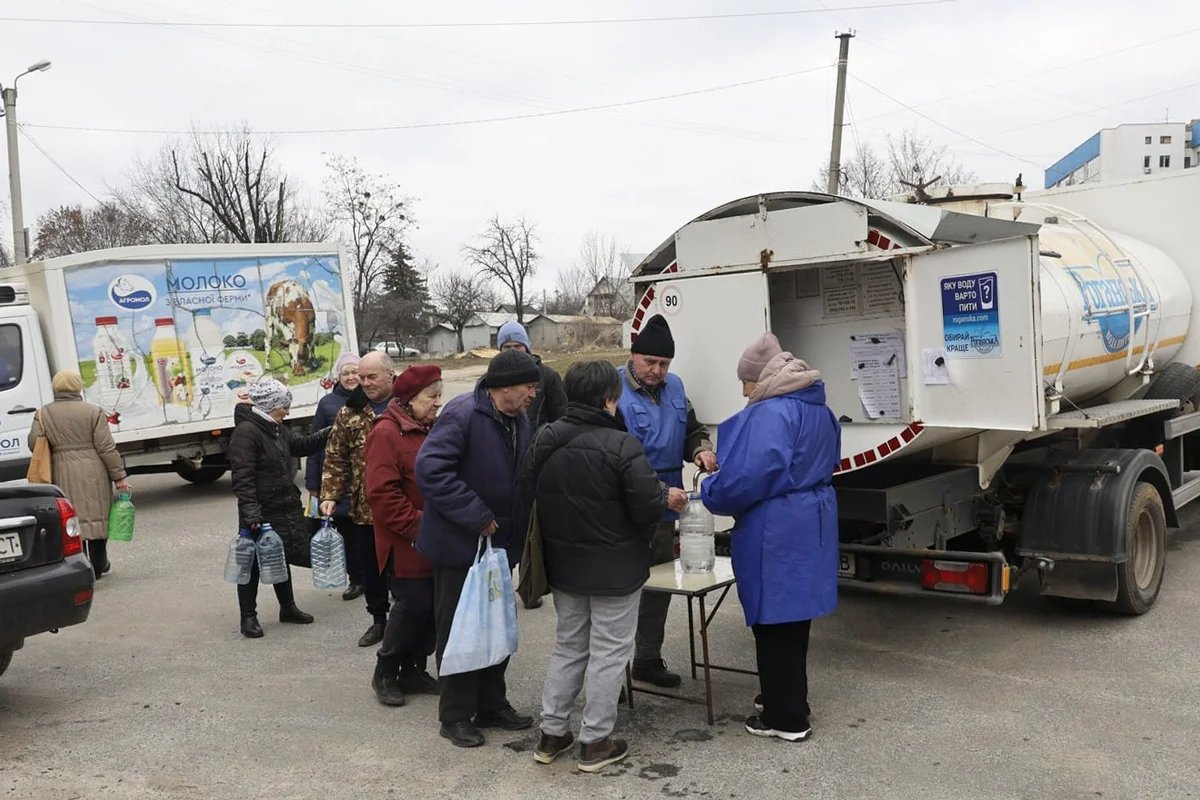
People collect water after airstrikes on energy facilities in Kharkiv, Ukraine, 22 March 2024. Photo: Sergei Kozlov / EPA-EFE
Aside from protecting Belgorod, the motivation behind an offensive seems clear: Putin wants to be in control of Kharkiv so that he can negotiate from a position of strength when the West finally decides to “resolve the Ukrainian problem”.
Oleksandr Kovalenko, Ukrainian military and political columnist for the Information Resistance Group, believes that Kharkiv will remain under threat until the end of the war.
Yet his analysis of the situation also provides reassurance. Considering the losses during the siege of Avdiivka, an offensive on Kharkiv would require a minimum of 500,000 fully equipped soldiers, backed up by at least 100,000–150,000 reserve troops, a demand the Russian military simply cannot meet at present. “There is no such number of Russian troops, even in the occupied territories. Mobilisation on this scale in such a short amount of time would be impossible,” Kovalenko said.
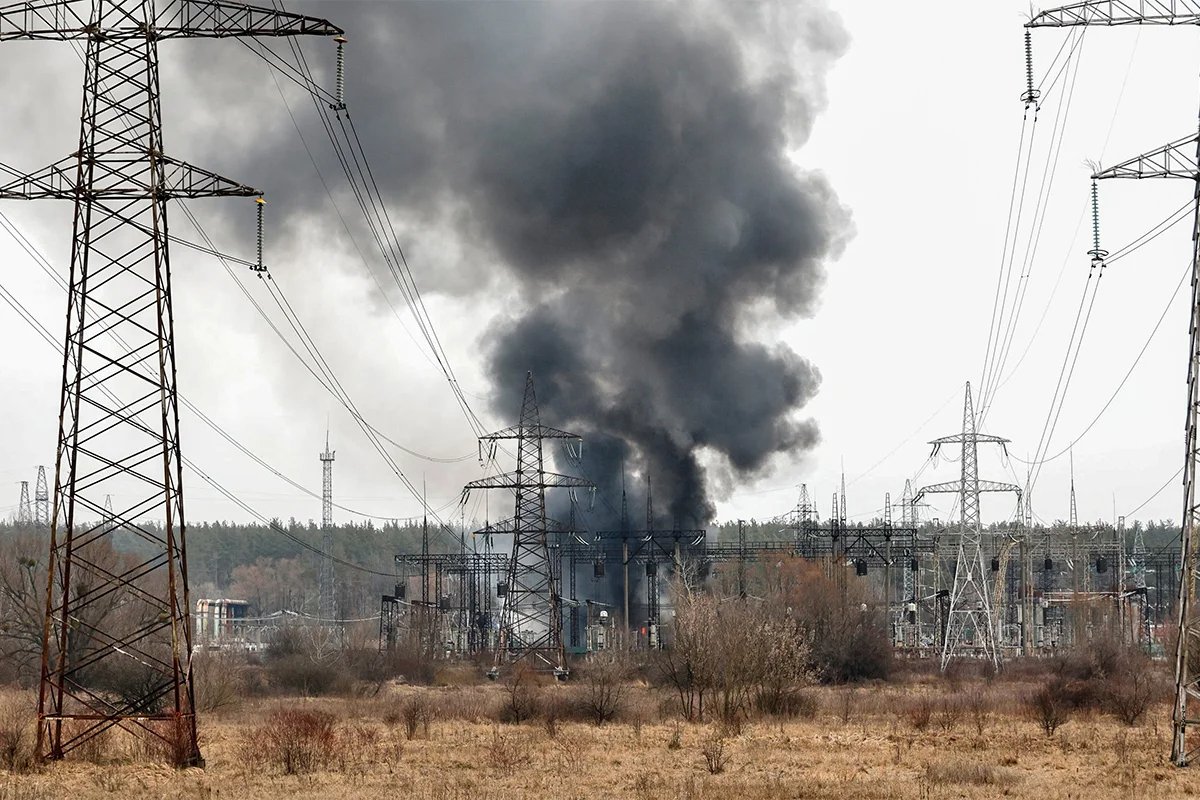
Smoke rises from power lines following a targeted airstrike in Kharkiv, Ukraine, 22 March 2024. Photo: Sergei Kozlov / EPA-EFE
Military analyst and reserve officer Colonel Oleh Zhdanov agrees with Kovalenko. He said he believed that the threat of an offensive was “almost equal to zero”. According to him, the Russian army does not appear to be amassing troops but is instead building a defensive line along the Belgorod region’s border with Ukraine, similar to the series of trenches, minefields and strong-points, known as the Surovikin Line, built ahead of Ukraine’s 2023 counteroffensive. Nevertheless, he agrees with Ukrainian President Volodymyr Zelensky that refugees should not return to Kharkiv as long as Ukraine’s second city is vulnerable to Russian airstrikes.
Join us in rebuilding Novaya Gazeta Europe
The Russian government has banned independent media. We were forced to leave our country in order to keep doing our job, telling our readers about what is going on Russia, Ukraine and Europe.
We will continue fighting against warfare and dictatorship. We believe that freedom of speech is the most efficient antidote against tyranny. Support us financially to help us fight for peace and freedom.
By clicking the Support button, you agree to the processing of your personal data.
To cancel a regular donation, please write to [email protected]
